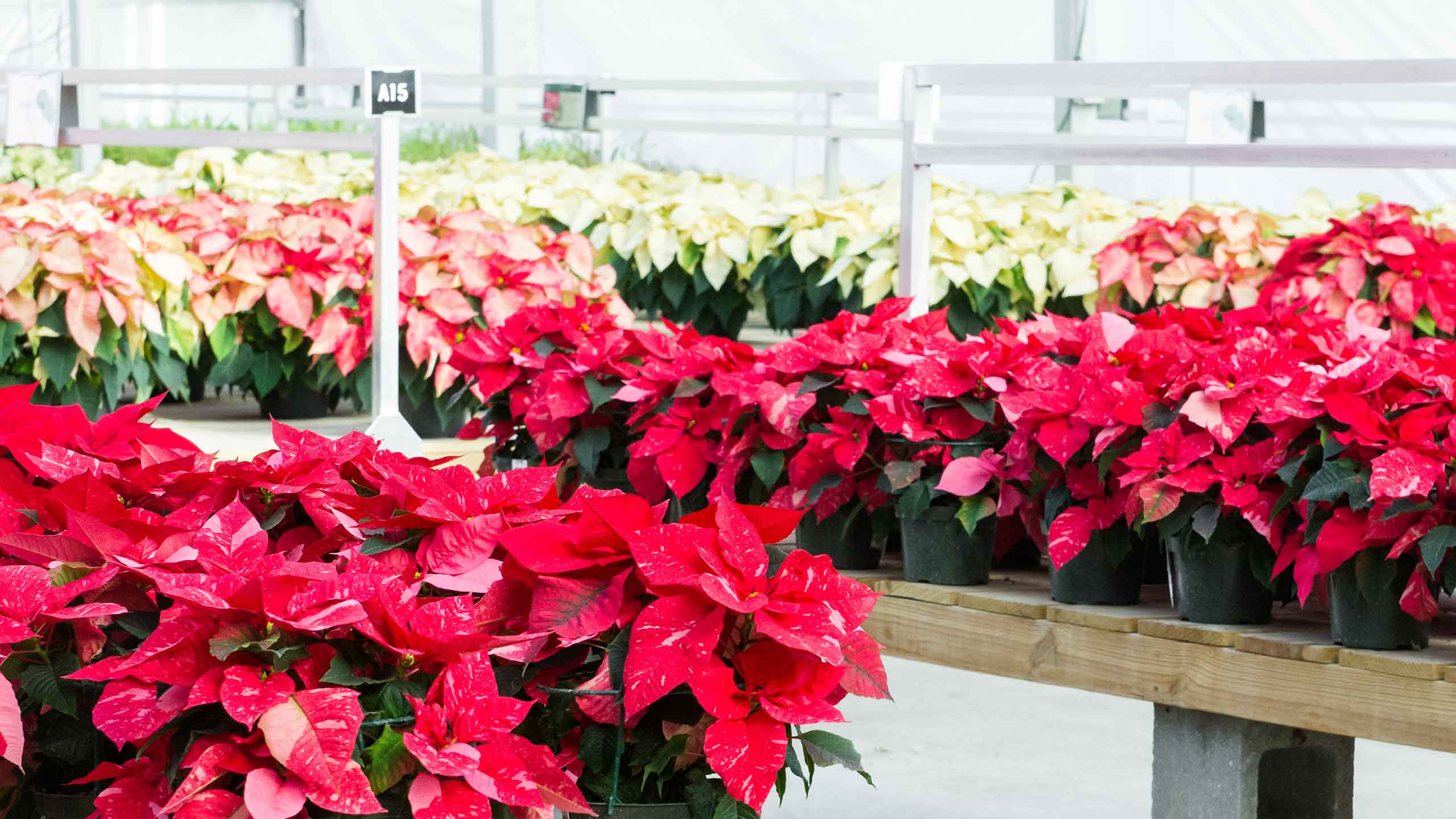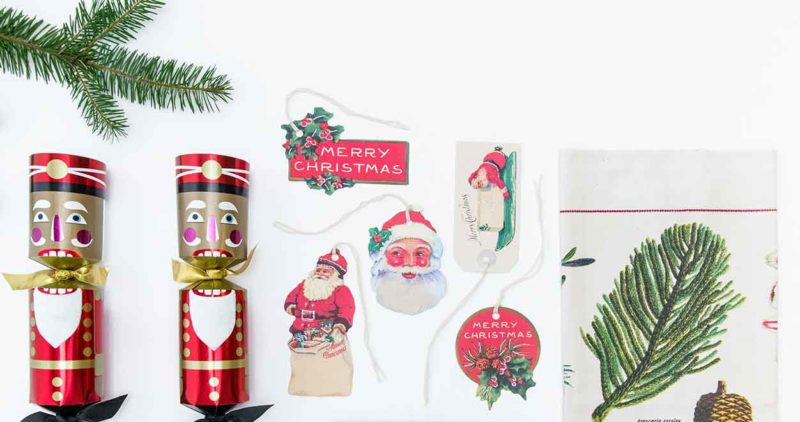
When we look at a beautiful poinsettia from the greenhouse, it’s hard to believe that in its native Central America and Mexico, poinsettias are huge and shrubby plants that grow like weeds along the side of the road. We’d also never suspect that poinsettias are very closely related to many other plants we know and that happen to look nothing like a poinsettia. The poinsettia’s scientific name is Euphorbia pulcherrima, and the genus Euphorbia is one of the most diverse groups in the plant kingdom. It includes members as disparate as the annual Euphorbia hypericifolia ‘Diamond Frost,’ the prostrate weed E. maculata that we call spotted spurge, and a huge number of succulents including E. tirucalli, E. milii, and E. ammak. Most of us know these plants as the pencil cactus, crown of thorns, and a type of candelabra cactus, respectively. You can even find Euphorbia represented in our Hardy Plants area – E. epithymoides or cushion spurge.

While the poinsettia and its Euphorbia relatives may look completely different from each other at first glance, all members of the genus share a couple of interesting traits. For one, all species in the genus Euphorbia produce a thick white sap – it’s meant to deter animals from eating it, but it can also be irritating to people with a latex allergy. And every Euphorbia species, including the holiday poinsettia, shares a fascinating flower structure that’s unique to this genus of plants.
In the flowers of most flowering plants, the male structures (anthers) and the female structure (ovary) together make up one flower, often surrounded with showy petals. But, according to euphorbiaceae.com, Euphorbia flowers are organized a little differently. In the genus Euphorbia, the flowers are either male or female and are very simplified with each flower containing just an anther or an ovary. These small flowers are gathered together in a little pocket or cup, and the whole structure is called a cyathium. On a poinsettia, the cyathia (plural) appear as little green, yellow, and red berry-like structures. If you look closely, you may be able to see the pollen-carrying anthers of the male flowers sticking out of the cyathia, and sometimes even the larger female structure emerging too.
In Euphorbia species, there may also be colorful petal-like structures with the cyathia called cyathophylls – or bracts, as they’re commonly called. So, what we typically think of as the “flower” on a poinsettia is really the colorful bracts associated with the plant’s tiny true flowers. These bracts vary widely in color, shape, and size, depending on the species. For instance, the tiny white “petals” that give ‘Diamond Frost’ its delicate, airy appearance are the bracts for that popular annual Euphorbia. On E. milii, or crown of thorns, the waxy, pinkish-red semicircles that make their blooms so unique are this plant’s bracts, and looking carefully, you’ll be able to spot the rest of the cyathium situated between them. This amazing flower structure and the white sap are the only clues you’d have that something as prickly and cactus-like as a crown of thorns could ever be related to the famed holiday poinsettia with its large tropical leaves and vividly colored bracts.
With Christmas quickly approaching, poinsettias (and many of their Euphorbia relatives) are the perfect “grab-and-go” gifts. Our poinsettias come in a range of sizes and colors from the classic ‘Prestige Early Red’ to the snowy ‘Princettia Pure White’ to the unexpectedly mango-hued ‘Gold Rush.’ For a fun twist, ‘Love U Pink’ has bright, almost neon-pink star-shaped bracts. Or try one of several other poinsettia cultivars with interesting speckles, spots, and marbling too. To make your plant gift extra special, consider adding a decorative glazed pot, or stop by the Information desk for a complementary foil sleeve. And, also at the Information desk, be sure to have one of the team wrap your tender indoor plant in a protective paper for its trip home.


